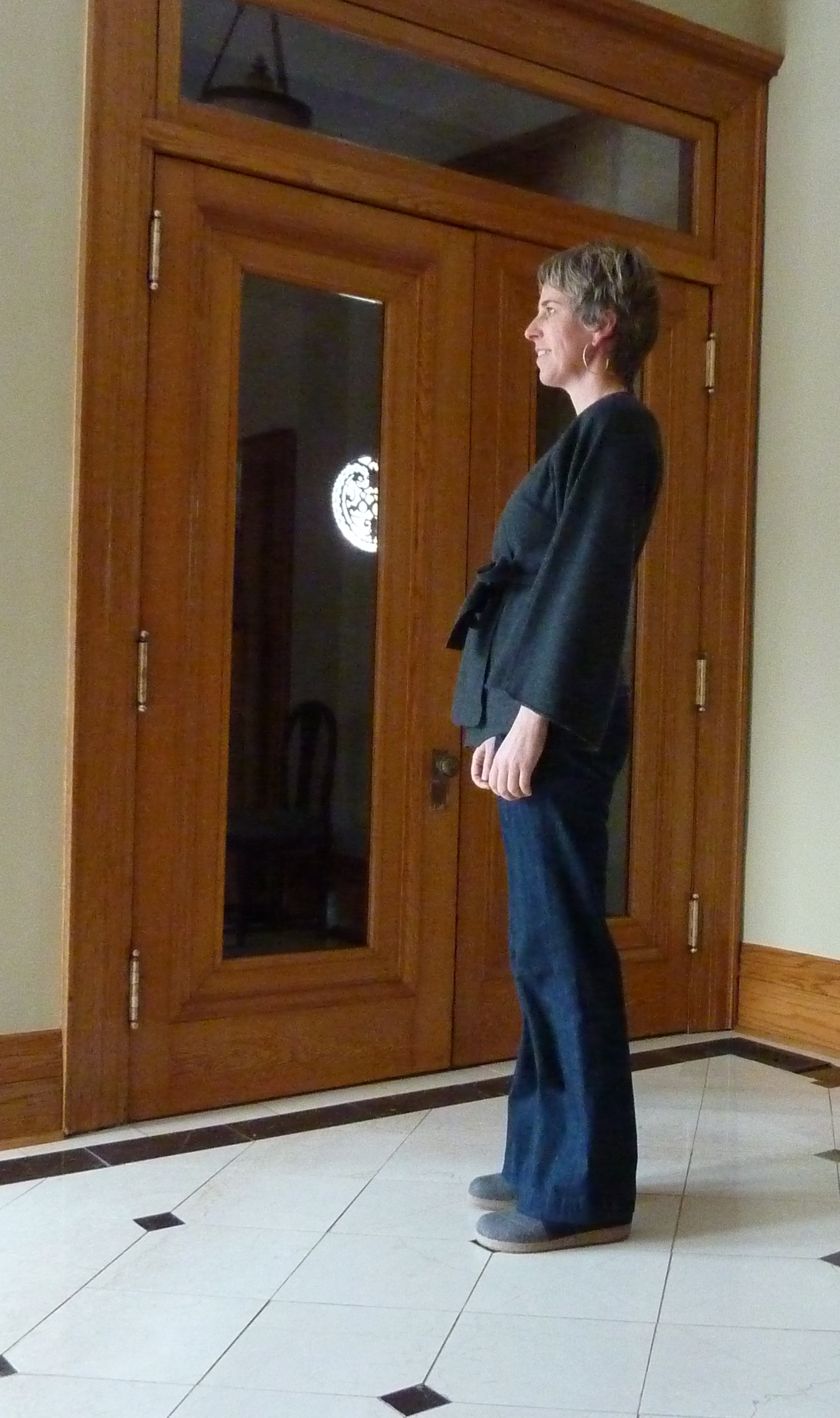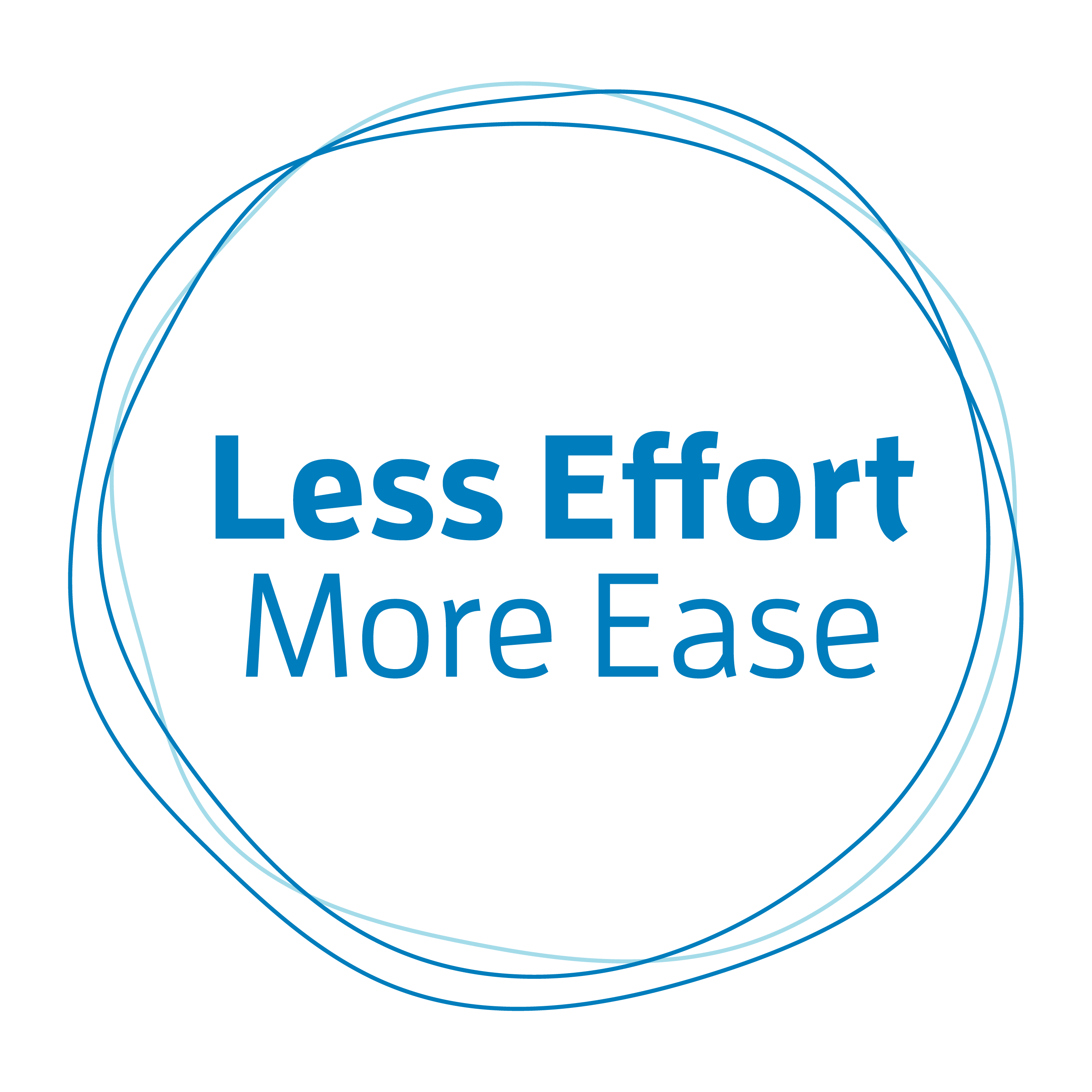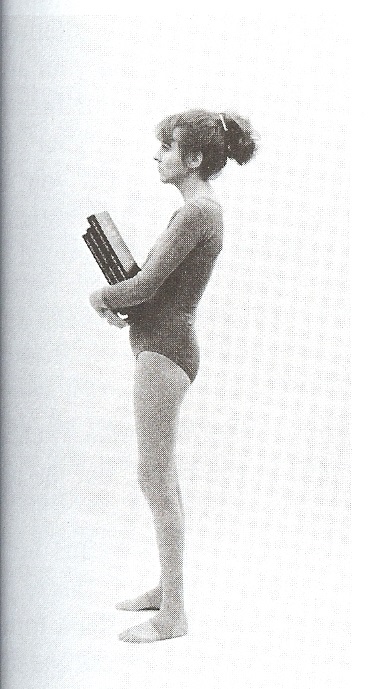How did your observations go? Have a chance to check out any mannequins?
Above is a picture I took of mannequins in a local shop window. So you see even the mannequins are standing with their hip joints pushed forward.
But why is standing with your hip joints pushed forward so detrimental?
If you consider the pelvis to be the foundation of the upper part of your body you want it firmly under you so it can support your torso, shoulders, neck, and head. When the hip joints are pushed forward your pelvis is not positioned firmly under you.
If you had a house and the foundation shifted it wouldn’t be safe to live in, would it? You would probably be evacuated and not be allowed back in until it was fixed.
When you push your hip joints forward it causes other things to readjust as you attempt to stay balanced.
Look at the picture of me below standing with my hip joints pushed forward. How does that affect my upper back? Can you see that my upper back is thrown backward behind my pelvis?

An unfortunately typical way to see people standing today: hip joints forward and upper back thrown backward
Often if someone is then carrying something in front of them this unhealthy relationship is often further exaggerated.
If you draw a line vertically from her upper back to the ground there would be nothing underneath to support it.
The problem is that the way you habitually stand will tend to feel vertical even if it’s not. So, instead of relying on whether you “feel” like you are standing vertically, it is useful to have an external reference point—like a countertop.
When you find that you are in front of a counter (bathroom counter, kitchen counter, store counter…) simply begin by noticing how you are orienting your hip joints in relation to the counter.
If you push your hip joints toward the counter the first step is to realize this is actually something you’re doing. You’re pushing your hip joints forward. If you’re doing something you can choose to stop doing it, even just a little bit. Let there be some space between the counter in front of you and your hip joints.
It is not so much that you have to do something new. Just do less of what you’re already doing.
The key is that you have to start with observation. If you don’t notice you’re doing something that’s unhelpful, harmful, or plain unnecessary you can’t choose to stop doing it.
With observation comes choice.
Picture credits: Fig 1: Back Trouble by Deborah Caplan.





